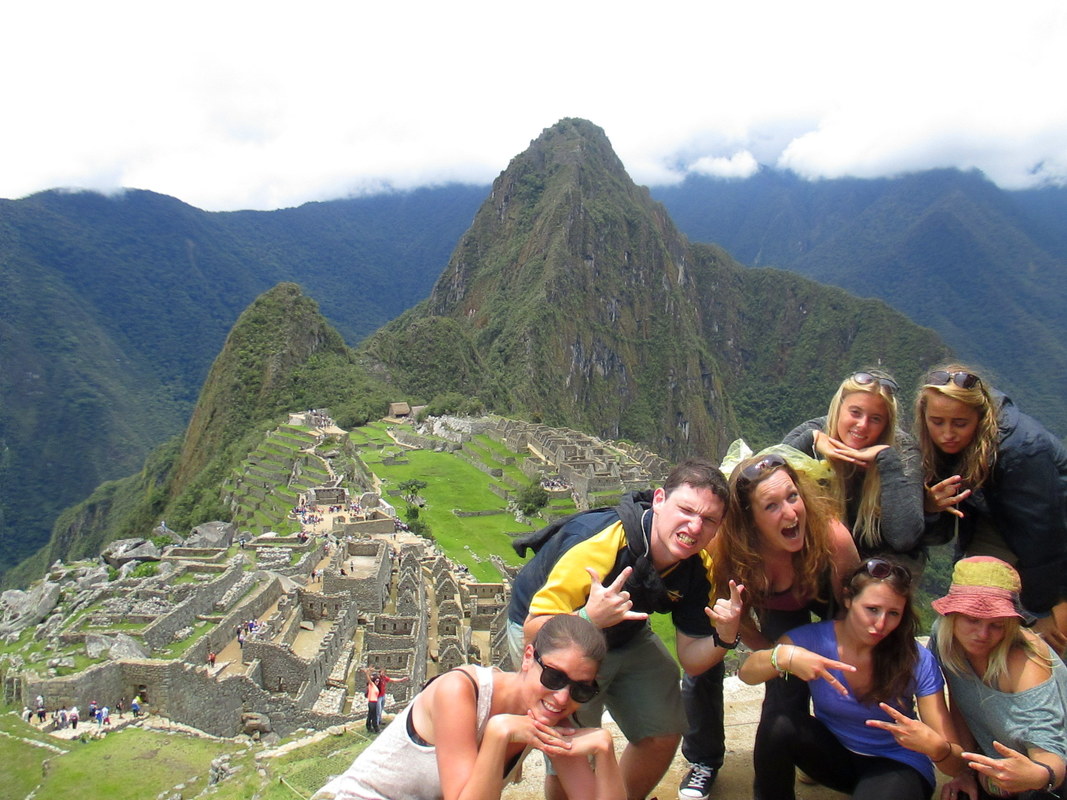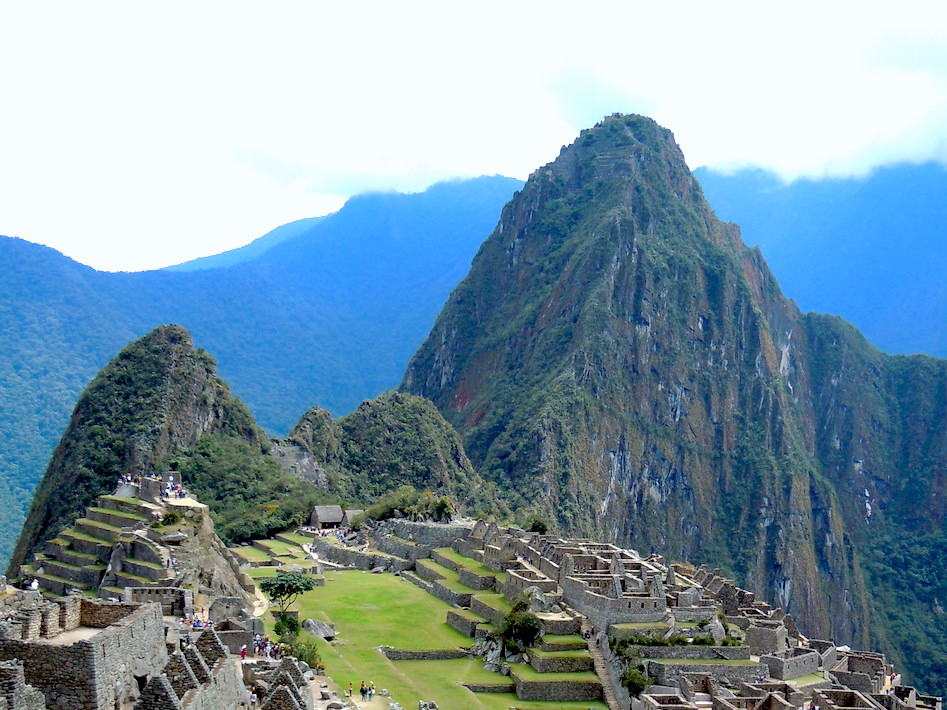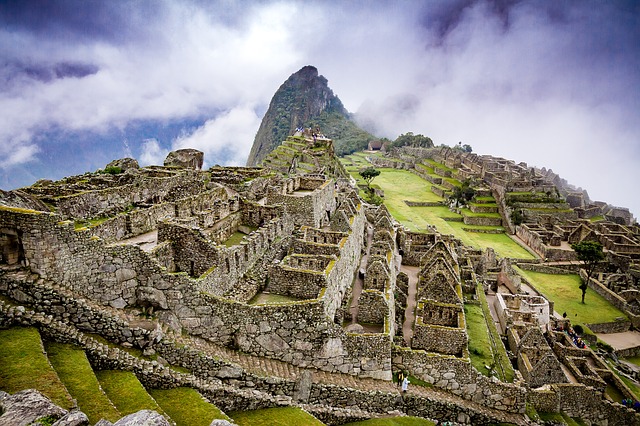From the Taj Mahal to Machu Picchu: A Journey for Indian Travellers in Peru

Introduction
Connecting Cultures
Imagine embarking on a journey that not only takes you to breathtaking landscapes but also allows you to immerse yourself in a rich tapestry of cultures. Peru, with its diverse heritage and vibrant traditions, offers a unique opportunity to connect with different ways of life. As you set foot in this enchanting country, get ready to be captivated by the magic of connecting cultures.
Planning Your Trip to Peru
Before you jet off to Peru, it's essential to make sure you have all your travel arrangements in order. Here are some key points to consider:
- Visa Requirements:
- Check if you need a visa to enter Peru based on your nationality.
- Ensure your passport is valid for at least six months beyond your intended stay.
- Health and Safety Tips:
- Get vaccinated against common illnesses like hepatitis A and typhoid.
- Pack a travel health kit with essentials like insect repellent and medications.
Arrival in Peru
Your Peruvian adventure kicks off as you land in Lima, the vibrant capital of Peru. Here's what to expect upon arrival:
- Exploring Lima:
- Discover the blend of colonial architecture and modern city life in Lima.
- Indulge in delicious Peruvian cuisine at local eateries.
- Acclimatizing to the Altitude:
- Take it easy and allow your body to adjust to the high altitude of Lima to avoid altitude sickness.
Stay tuned as we delve deeper into the wonders of Peru, starting with the awe-inspiring city of Cusco in the next section. Get ready to experience the magic of this culturally rich destination firsthand!

Planning Your Trip to Peru
After immersing yourself in the vibrant culture of Peru, it's time to plan your journey to this incredible destination. Before embarking on your adventure, let's delve into the practical aspects of your trip to ensure a smooth and enjoyable experience.
Visa Requirements
When travelling to Peru, it's essential to familiarize yourself with the visa requirements to enter the country. Here are some key points to consider:
- Tourist Visa: Citizens from many countries, including the United States, Canada, the United Kingdom, and Australia, do not need a visa for visits of up to 183 days.
- Passport Validity: Ensure your passport is valid for at least six months beyond your intended stay in Peru.
- Entry Stamp: Upon arrival, make sure to obtain an entry stamp in your passport, as you will need it to exit the country.
Understanding these visa regulations will help you avoid any unexpected issues during your trip, allowing you to focus on enjoying all that Peru has to offer.
Health and Safety Tips
Before traversing the enchanting landscapes of Peru, it's crucial to prioritize your health and safety. Here are some tips to consider:
- Altitude Sickness: As you prepare to explore high-altitude regions like Cusco and Machu Picchu, take time to acclimatize gradually to reduce the risk of altitude sickness.
- Travel Insurance: Consider purchasing travel insurance that covers medical emergencies and trip cancellations to give you peace of mind during your journey.
- Vaccinations: Consult with a healthcare provider to determine if you need any specific vaccinations before travelling to Peru.
By prioritizing your health and safety, you can fully enjoy the wonders of Peru without any unnecessary setbacks. Stay tuned as we delve into the enchanting city of Lima after your arrival in Peru.
Arrival in Peru
Exploring Lima
After immersing yourself in the wonders of Cusco, your journey through Peru continues as you arrive in Lima, the vibrant capital city. Lima offers a blend of modernity and history, with bustling streets, beautiful colonial architecture, and a culinary scene that will tantalize your taste buds. Here's what you can look forward to in Lima:
- Miraflores: Explore this upscale district known for its stunning seaside cliffs, upscale shopping areas, and vibrant nightlife.
- Historic Center: Wander through the historic heart of Lima, declared a UNESCO World Heritage Site, and admire the impressive architecture of cathedrals and palaces.
- Parque Kennedy: Visit this central park in Miraflores, popular for its friendly feline inhabitants and a great spot to people-watch.
- Culinary Delights: Indulge in Peruvian gastronomy at local markets or renowned restaurants offering traditional dishes like ceviche and Lomo Saltado.
Acclimatizing to the Altitude
As you transition from Lima to higher altitudes, acclimatizing becomes essential to ensure an enjoyable and safe experience during the rest of your Peruvian adventure. Here are some tips for acclimatizing to the altitude:
- Stay Hydrated: Drink plenty of water to help your body adjust to the reduced oxygen levels at higher altitudes.
- Take it Easy: Avoid strenuous activities upon arrival in Cusco to allow your body time to adjust.
- Coca Leaf Tea: Enjoy a cup of coca leaf tea, a traditional remedy in the Andes to alleviate symptoms of altitude sickness.
- Light Meals: Opt for light meals to avoid digestive issues often exacerbated by altitude.
With a mix of urban exploration in Lima and mindful acclimatization to the altitude, you are set to continue your Peruvian odyssey with a deeper understanding of this diverse country.
Discovering the Wonders of Cusco
Visiting the Sacred Valley
After exploring Lima and acclimatizing to the altitude, your next stop in Peru should be the mesmerizing Sacred Valley. This picturesque region, situated just a short drive from Cusco, offers a glimpse into the heart of the ancient Inca civilization. Here's what you can expect when visiting the Sacred Valley:
- Scenic Landscapes: The Sacred Valley is renowned for its stunning natural beauty, with lush green valleys, towering mountains, and meandering rivers creating a postcard-perfect setting.
- Charming Towns: As you journey through the valley, you'll encounter quaint Andean villages where traditional customs and practices are still very much alive. Don't miss the opportunity to engage with the friendly locals and learn about their way of life.
- Archaeological Sites: The Sacred Valley is dotted with fascinating Incan ruins that offer a window into the past. One of the must-visit sites is Pisac, known for its impressive terraced fields and intricate stone constructions.
Exploring Incan Ruins
Once you've immersed yourself in the beauty of the Sacred Valley, it's time to delve deeper into the history of the Incas by exploring the remarkable Incan ruins near Cusco. Here are some sites you shouldn't miss:
- Sacsayhuamán: This massive fortress overlooking Cusco showcases the incredible engineering skills of the Incas, with enormous stone blocks fitting together perfectly without the use of mortar.
- Qorikancha: Visit this former Incan temple in the heart of Cusco to marvel at the intricate stonework and learn about the spiritual significance it held for the Inca civilization.
- Ollantaytambo: Climb the terraces of this Incan archaeological complex to admire the well-preserved structures and enjoy panoramic views of the surrounding valley.
Exploring the Sacred Valley and Incan ruins in and around Cusco is a truly unforgettable experience that offers a glimpse into the rich cultural heritage of Peru.
Trekking to Machu Picchu
After immersing yourself in the rich culture of Peru, the next leg of your journey takes you to the iconic Machu Picchu. This ancient Incan citadel nestled high in the Andes mountains is a marvel to behold.
Choosing the Right Trek
When it comes to trekking to Machu Picchu, there are several routes to choose from. Each offers its own unique experience, catering to different fitness levels and preferences. Here are a few popular treks to consider:
- Inca Trail: The classic route is known for its stunning scenery and historical significance. Requires a permit and is usually booked well in advance.
- Salkantay Trek: A challenging yet rewarding alternative with diverse landscapes, including snow-capped mountains and lush jungles.
- Lares Trek: Perfect for those looking to immerse themselves in Andean culture, passing through remote villages along the way.
- Choquequirao Trek: A more off-the-beaten-path option, leading to another impressive Incan site before reaching Machu Picchu.
Consider factors like trek duration, level of difficulty, and the type of experience you're seeking when choosing the right trek for your Machu Picchu adventure.
Experiencing the Lost City
As you finally set foot in Machu Picchu, the mystical aura of this ancient wonder envelopes you. Here are some tips to make the most of your experience:
- Sunrise at Machu Picchu: Witnessing the sunrise over the citadel is a magical experience. Arrive early to secure a good spot.
- Exploring the Ruins: Take your time to wander through the ruins, marvel at the intricate stonework and learn about the history from a guide.
- Huayna Picchu: Consider hiking up Huayna Picchu for a bird's eye view of Machu Picchu (limited daily permits available).
Trekking to Machu Picchu is not just a physical journey but a spiritual one as you unravel the mysteries of this ancient site and connect with the history of the Incas.
Immersing in Peruvian Culture
After trekking to Machu Picchu and experiencing the wonders of Cusco, it's time to delve deeper into Peruvian culture. One of the best ways to do this is through its rich culinary traditions and vibrant arts and crafts scene.
Trying Local Cuisine
When it comes to Peruvian cuisine, your taste buds are in for a treat. From flavorful ceviche to hearty lomo saltado, the country's culinary landscape is as diverse as its geography. Here are some must-try dishes during your cultural immersion:
- Ceviche: Fresh fish or seafood marinated in citrus juices, chilli peppers, and onions.
- Lomo Saltado: A delicious stir-fry dish featuring beef, tomatoes, onions, and French fries.
- Aji de Gallina: Shredded chicken in a creamy and spicy sauce made from yellow chilli peppers.
- Pisco Sour: Peru's national cocktail made with pisco, lime juice, simple syrup, egg white, and bitters.
Exploring local markets and dining at traditional Peruvian restaurants will give you a true taste of the country's gastronomic delights.
Learning Traditional Crafts
Peru is also renowned for its vibrant artisanal heritage, with Indigenous communities producing intricate textiles, pottery, and jewellery. Engaging in a workshop or visiting local artisans can provide insight into these traditional crafts. Here are some crafts you might encounter:
- Alpaca Wool Weaving: Witness skilled weavers creating beautiful textiles using alpaca wool.
- Pottery Making: Experience the art of crafting pottery using traditional techniques.
- Silver Jewelry: Learn about the intricate process of crafting silver jewellery, often adorned with colourful gemstones.
- Textile Embroidery: Explore the intricate world of textile embroidery, showcasing elaborate designs and patterns.
By immersing yourself in Peruvian craftsmanship, you not only support local artisans but also gain a deeper appreciation for the country's rich cultural heritage.

Sustainable Travel Practices in Peru
Supporting Local Communities
After immersing yourself in the rich cultures of Peru and experiencing its breathtaking landscapes, it's crucial to consider how your travels impact the local communities you encounter. Sustainable travel practices play a vital role in preserving the authenticity of destinations and supporting the well-being of the people who call these places home.
Supporting Local Communities
When visiting Peru, there are several ways you can support local communities and contribute to their sustainable development:
- Stay in locally-owned accommodations: Opt for guesthouses, homestays, or eco-lodges run by local residents. By choosing these accommodations, you directly support the local economy and create opportunities for community members.
- Buy souvenirs from local artisans: Instead of purchasing mass-produced souvenirs, consider buying handcrafted goods directly from local artisans. Not only does this support traditional craftsmanship, but it also provides artisans with a source of income to sustain their livelihoods.
- Participate in community-based tours: Joining tours led by local guides or community cooperatives allows you to engage with residents on a personal level and learn about their traditions and way of life. These tours provide insight into the local culture while empowering community members economically.
Eco-Friendly Tourism Initiatives
In addition to supporting local communities, adopting eco-friendly tourism practices is essential for minimizing your environmental impact when exploring Peru's natural wonders:
- Reduce plastic waste: Carry a reusable water bottle and shopping bag to minimize single-use plastics. Many destinations in Peru are actively working to reduce plastic pollution, and your conscious choices can make a difference.
- Choose eco-conscious tour operators: Look for tour companies that prioritize sustainability and environmental conservation. Eco-friendly tour operators often focus on responsible practices, such as waste reduction, wildlife protection, and energy efficiency.
By supporting local communities and engaging in eco-friendly tourism initiatives, you can contribute to the preservation of Peru's cultural heritage and natural beauty for future generations to enjoy.
